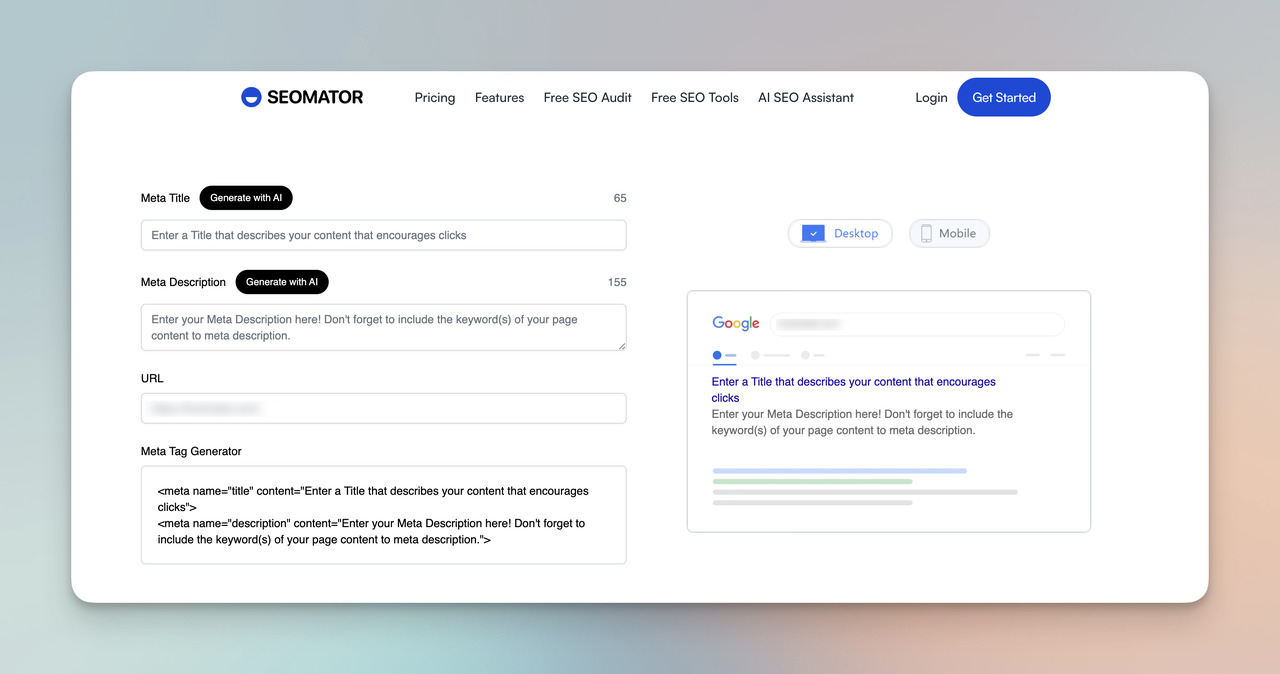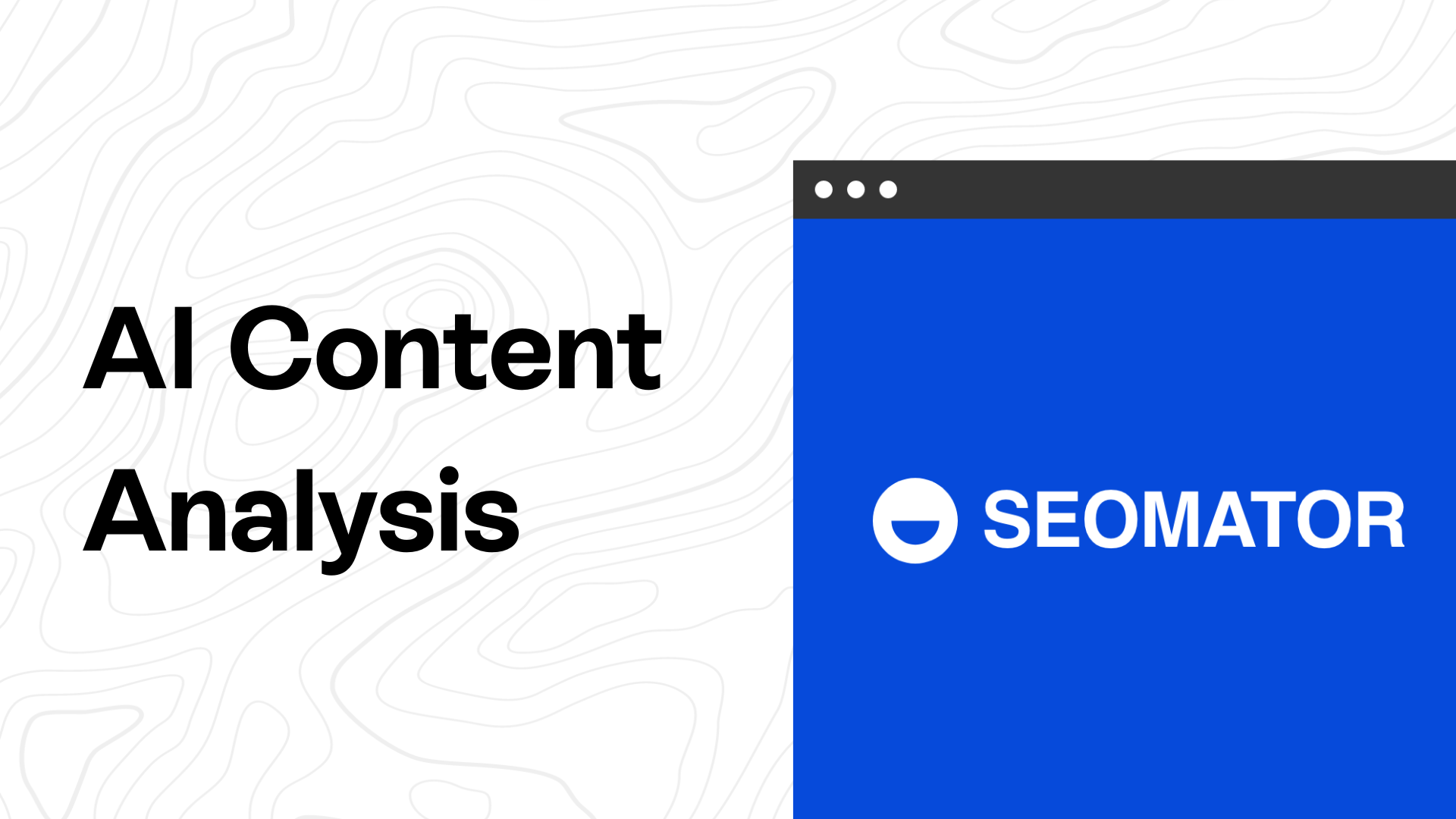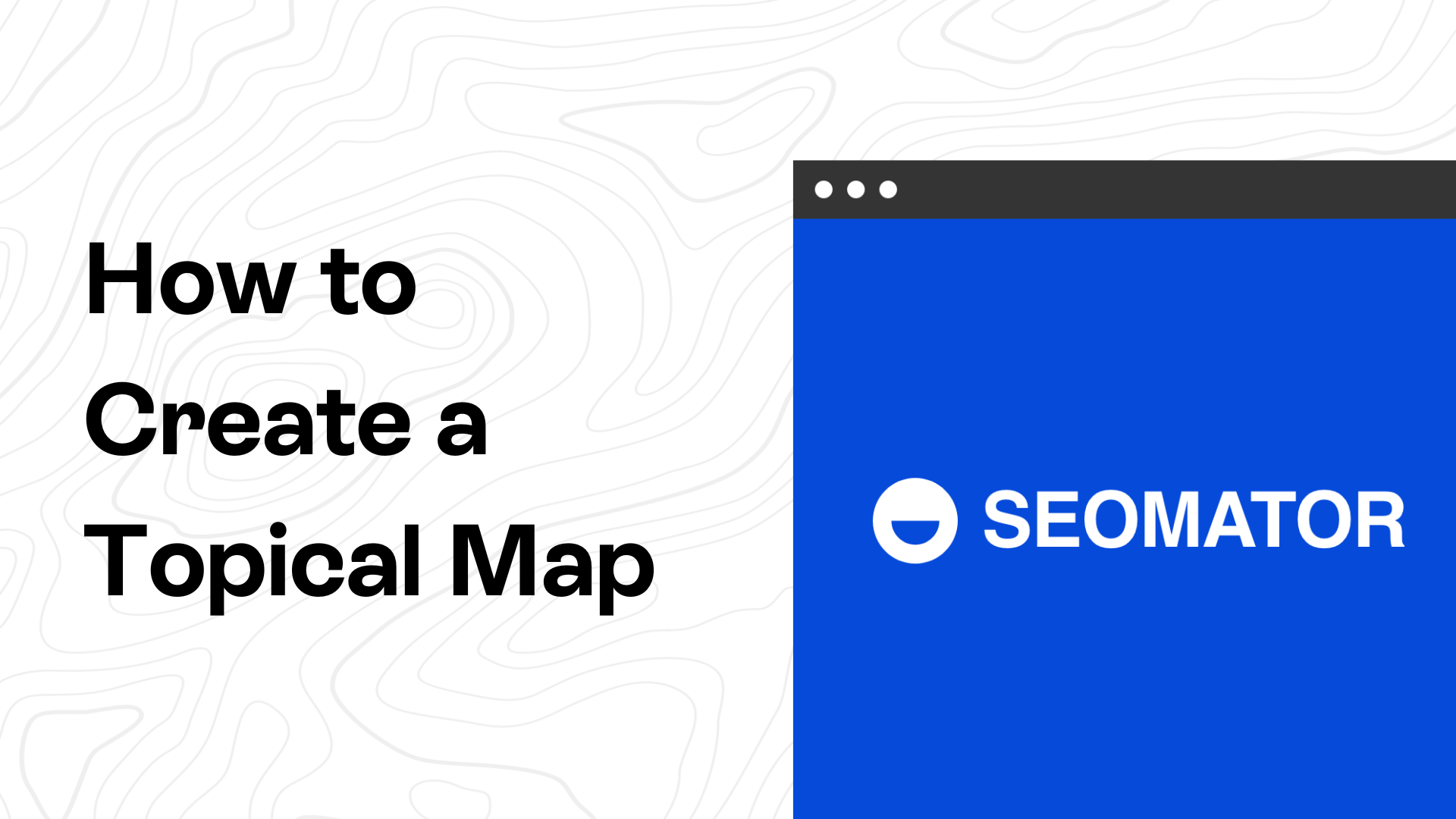
Let’s explore the basics of metadata optimization to truly harness its power.
What is Metadata?
In SEO, metadata or meta data (both are correct) is the information about your web page data. Metadata acts as a first impression. It's what people read when they find your website in search results.
Imagine it like this – if your website was a book, then metadata would be the blurb that gives an overview of what the story is about.
Search engines like Google use metadata to determine what your page is about and whether it's relevant to a user's search query. This information isn’t usually seen on the page itself, but in the page’s code and search engine results.
Key examples of metadata include the meta title (meta tags or title tags), meta description, and meta keywords (though these are not the only elements):
🌐 Title Tags: These are HTML elements that specify the title of a web page. Title tags are displayed on the SERPs and are crucial for usability, SEO, and social sharing.
🌐 Meta Description: This is a brief summary of about 155 characters that sum up the content of your page. The meta description is displayed under your title tag on the SERP.

How to Optimize Metadata in 5 Steps
When your metadata is optimized for users, it can help improve your page's ranking on the SERPs. A well-crafted meta title and description can compel users to click on your link, increasing traffic to your site.
It's time to shift our focus towards implementing effective strategies and best practices for metadata optimization.
1) Choose the Right Keyword
When it comes to metadata optimization, fastidious keyword research is the first step. The primary keyword should ideally be a part of your title tag and meta description. But how do you choose this keyword? Let's shed some light.
👉 Understand User Intent: Observe the search queries your audience uses. Are they informational, transactional, or navigational? Answering these will help you decide your keywords more accurately.
👉 Use Keyword Research Tools: Tools like SEOmator’s Free Keyword Research Tool or Google Keyword Planner aid in finding keywords relevant to your business. You’ll want to focus on high search volume and lower competition keywords.
👉 Consider Long-Tail Keywords: Yes, the search volume might be low, but they're more specific and often signify higher user intent. That means a higher likelihood of conversion!
👉 Avoid Keyword Stuffing: Scatter your chosen keyword throughout your content, but beware of stuffing! Keep it natural and valuable. Overloading content with keywords decreases readability and Google’s algorithms are designed to penalize keyword stuffing.
2) Craft the Perfect Meta Title
The meta title tag, as the name suggests, is the title of your web page. It’s what users first see when your web page is listed among search results.
The title tag plays a significant role in helping search engines understand what your page content is all about. Here’s what you need to make it irresistible:
❇️ Keep It Concise: Ideal title tag length should not exceed 60 characters. Google starts truncating the title tag on SERP after approximately 60 characters.
❇️ Place Your Keyword Wisely: Position your keyword towards the start of your tag for greater visibility. It must seem natural and not forced.
❇️ Make It Clear: Your title tag should give users a clear indication of what your page content is about. It's always good to be unique and avoid generic terms.
❇️ Use Your Brand Name: If there's enough space, consider ending your title tag with your company or brand name. It aids in brand recognition.
❇️ Avoid Duplication: Each web page should have a unique title tag. Duplicate title tags may confuse search engines and affect your SEO ranking.
❇️ Catch the User’s Eye: Add numbers to the title tag as they stand out in SERPs. Also, using powerful adjectives like ‘ultimate’, ‘best’, or ‘definitive’ can make your title tag more appealing. Moreover, question based titles spark curiosity and draw users in.

3) Write a Compelling Meta Description
Meta descriptions serve as miniature ads for your pages. They provide summary text that tells a search engine what a page's content is all about. This brief summary is often the first insight into your web page a user gets.
While meta descriptions themselves do not directly affect page ranking, they are extremely important for click-through rates. Relevant and compelling meta descriptions prompt users to click the link to your page, increasing website traffic.
An irrelevant and vague meta description is easily disregarded by the user and the search engine, so it’s important to take certain measures:
📣 Include the Keyword: A well-crafted meta description must include the page's primary keyword. This helps Google understand the relevance of your page to the search query.
📣 Limit the Characters: Ideally, keep your meta descriptions within 150-160 characters to avoid being cut off in results displays.
📣 Make It Exciting: Your meta description should act as an engaging snippet of your page content. Ask questions, offer solutions, and create curiosity.
📣 Be Unique: Vanity strikes again! Each of your pages must have a unique meta description. Duplicate meta descriptions across multiple pages could lead to lower click-through rates.
If you want to craft a relevant, compelling, concise and keyword-optimize meta title and meta description, you can simply use SEOmator’s Meta Description Generator with AI.

4) Use Header Tags Effectively
Consider header tags as your web page's chapter headings. They structure your content while making it easy for users to navigate through your text. Furthermore, they allow search engines to grasp the structure and topic of your content.
Just as your document would need headings and subheadings to make sense, your web page needs these, too. They're graded hierarchically from H1 to H6.
Here are some tips to maintain a balanced usage:
📌 Use One H1 Tag: H1 tag usually refers to the title or main heading of a page. It represents the main topic and should include the primary keyword. Stick to one H1 tag per page.
📌 Use Multiple H2 and H3 Tags: H2 tags are subheadings that follow the H1 tag. They usually identify different sections within the content. H3 tags follow H2 tags and so on. They are used to break down the sections further. They can include related or secondary keywords.
📌 Keep Them Brief and Interesting: Just as you'd skim a book before reading it thoroughly, users also skim through online content. Effective usage of header tags can capture the reader's attention and get them to stay. Therefore, make them short and descriptive.
5) Don’t Neglect Image Alt Text
Every image on your web page should have an alt text.
Alt text or alternative text is a tag used in HTML for images. It’s a description that provides context to an image and appears if the image fails to load on the web page.
Alt text is often an ignored part of metadata optimization. However, disregarding it can cause an SEO dent. It’s used by search engines to understand the content of an image. Since search engines can’t see images, they rely on alt text to understand what it is.
A well-crafted alt text can significantly enhance your SEO, while ignoring it can harm your overall performance. Here are some best practices:
🖼️ Be Descriptive: Clearly describe the image content as concisely as possible. If an image fails to load, the alt text will offer a description, improving the overall user experience. Also, users with visual impairments, relying on screen readers, can understand the content of an image with a well-described alt text.
🖼️ Keep it Short: An ideal alt text should be under 125 characters.
🖼️ Use Keywords Sparingly: Include keywords only if it makes sense and is relevant to the image.
Can You Leverage AI for Metadata Optimization?
While SEO is a strategy developed by humans, you can also leverage technology like AI to excel in metadata optimization. Incorporating AI into your SEO strategy can result in significant improvements in your metadata optimization as well as your overall SEO performance.
Here’s how AI can enhance and scale your SEO efforts:
🦾 Improved Keyword Research: With AI, keyword research can be more precise and efficient than manual efforts. AI tools delve into massive data sets to unearth high-volume keywords with low competition. Moreover, they can identify long-tail keywords that show great potential.
🦾 Automated Optimization: Various AI tools can automate metadata optimization, fueling your SEO efforts. They can generate SEO-friendly meta titles and descriptions, detect keyword stuffing, and even suggest improvements.
🦾 Content Optimization: In addition to meta tags, your content needs to be optimized too. AI-powered tools can analyze your content using parameters like keyword density, readability, and uniqueness. They can even suggest keyword placements in your content.
🦾 Predictive Analysis: Leveraging AI for metadata optimization goes beyond your website. With predictive analysis, AI can foresee trends and keep your SEO strategy ahead of the curve.
🦾 Scalability: As your website grows, so do your SEO needs. Manual optimization becomes increasingly challenging with the scale. Here, AI swoops in as a savior, driving your SEO strategy efficiently regardless of the size of your website.
See: AI Lead Generation: Techniques & Tools
Case Studies
To cement your newfound knowledge, it's enlightening to see some real-life examples. Below are two case studies that illustrate how successful metadata optimization can boost your organic traffic and click-through rates.
🔍 Website A: How Metadata Optimization Increased Organic Traffic by 30%
Our first example is a popular e-commerce website that was struggling with its online presence. Despite having a broad range of products and a user-friendly interface, they just couldn't attract enough organic traffic.
The company undertook a metadata overhaul. They optimized their title tags and meta descriptions, ensuring they were unique and descriptive for each page.
They also incorporated keywords based on thorough keyword research and kept URL structures neat and informative.
What stood out, however, was their meta description strategy. They crafted compelling descriptions, injected with relevant keywords that matched the search intent of their potential customers.
This resulted in the meta description acting like a sales pitch for the page, effectively catching the users' interest.
Post-optimization, they monitored their website's progress by using Google Search Console. After a month, the website saw a 30% increase in their organic traffic!

🔍 Website B: How Metadata Tweaks Enhanced Click-Through-Rates by 20%
The second case study revolves around a budding blog that was writing exceptional content but wasn't attracting enough clicks, even when they ranked decently on the SERPs.
Their metadata lacked optimization. Their title tags were generic, failing to entice potential readers, and their meta descriptions were summarily neglected, often auto-filled by search engines.
Knowing they had to make a change, they focused on optimizing their metadata by crafting unique, informative, and compelling title tags and meta descriptions. They ensured the use of power words and numbers in their title tags, making them hard to resist.
For meta descriptions, they crafted summaries that sparked curiosity, effectively pulling the readers in.
The results? Their click-through-rate (CTR) from organic search saw a 20% increase in just three weeks!
Conclusion
Metadata is the linchpin of your SEO strategy. It affects how your website is found, understood, and ranked by search engines.
Optimized metadata introduces clarity, relevance, and persuasion to your content, significantly affecting clicks and conversions. This includes title tags, meta descriptions, alt texts, and header tags, each having distinct roles and significance in metadata optimization.
Mastering metadata optimization isn't an overnight endeavor. After you successfully optimize your metadata to gain a competitive edge, do not forget to regularly review and update your metadata to ensure it stays relevant, and up-to-date.
While metadata optimization serves as your starting point, it's vital to understand SEO practices as interconnected components that make up your website's complete SEO health!
✨Related Articles:
- What are Rich Snippets: Understanding SEO-Rich Snippets





